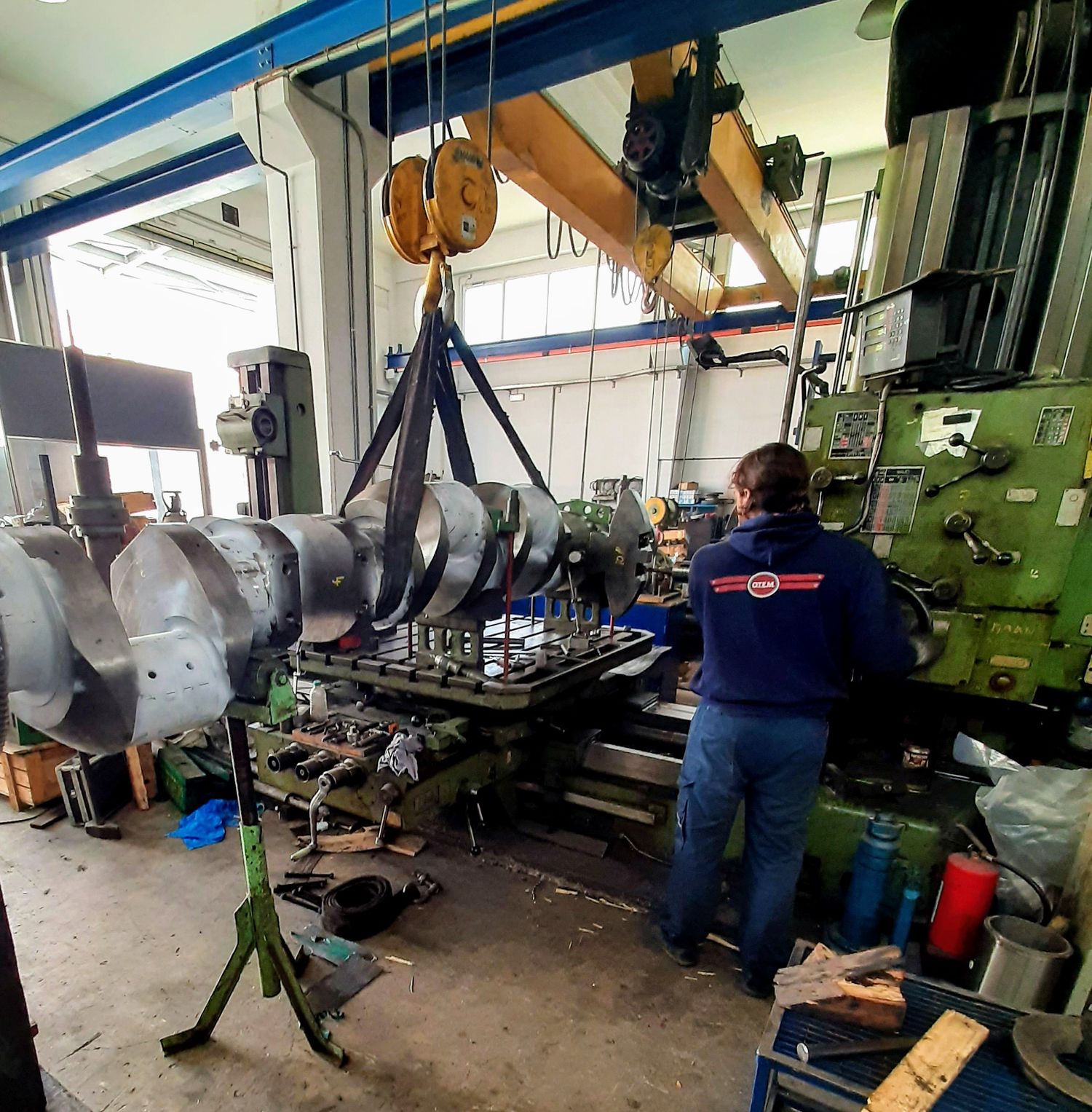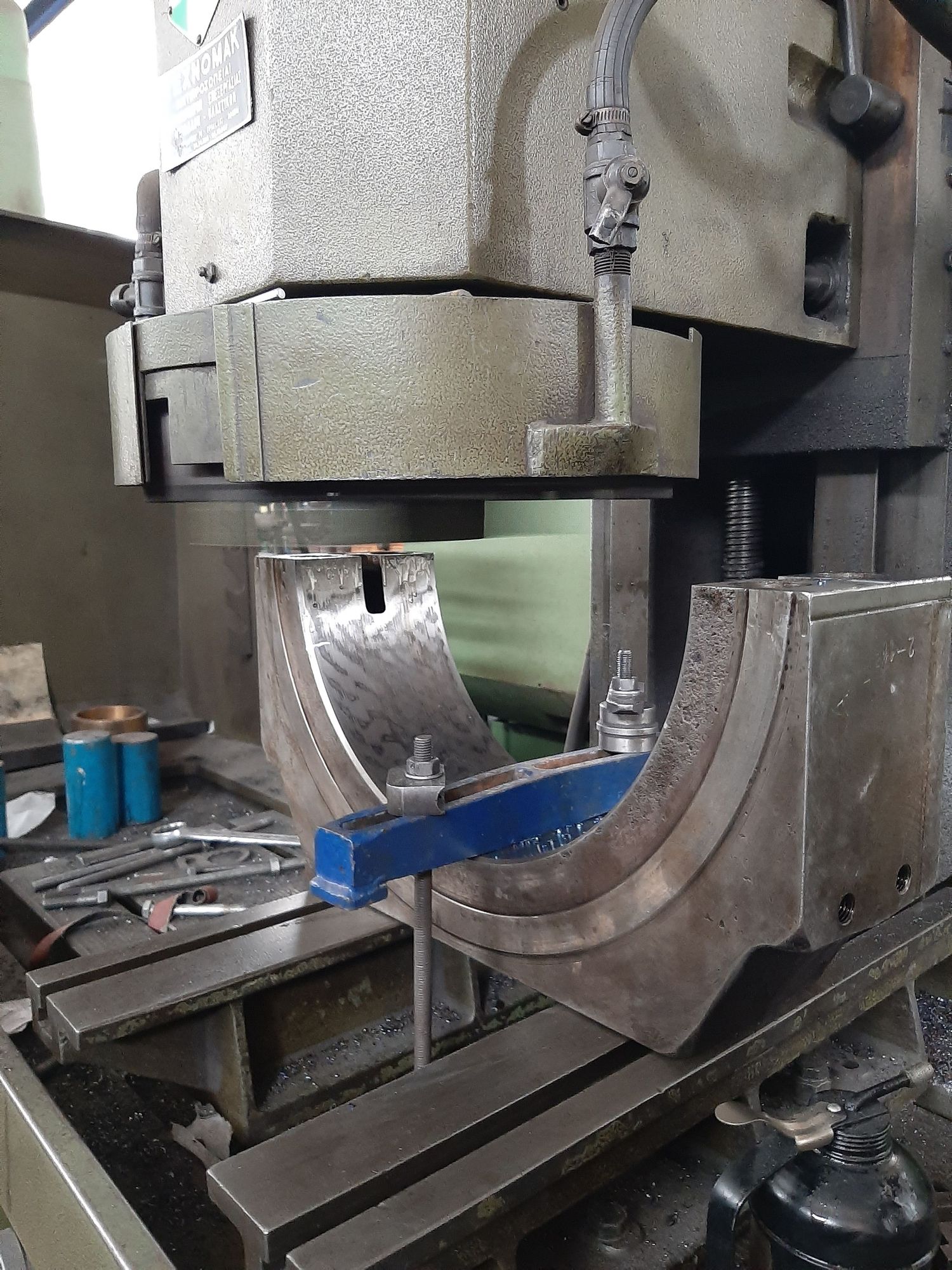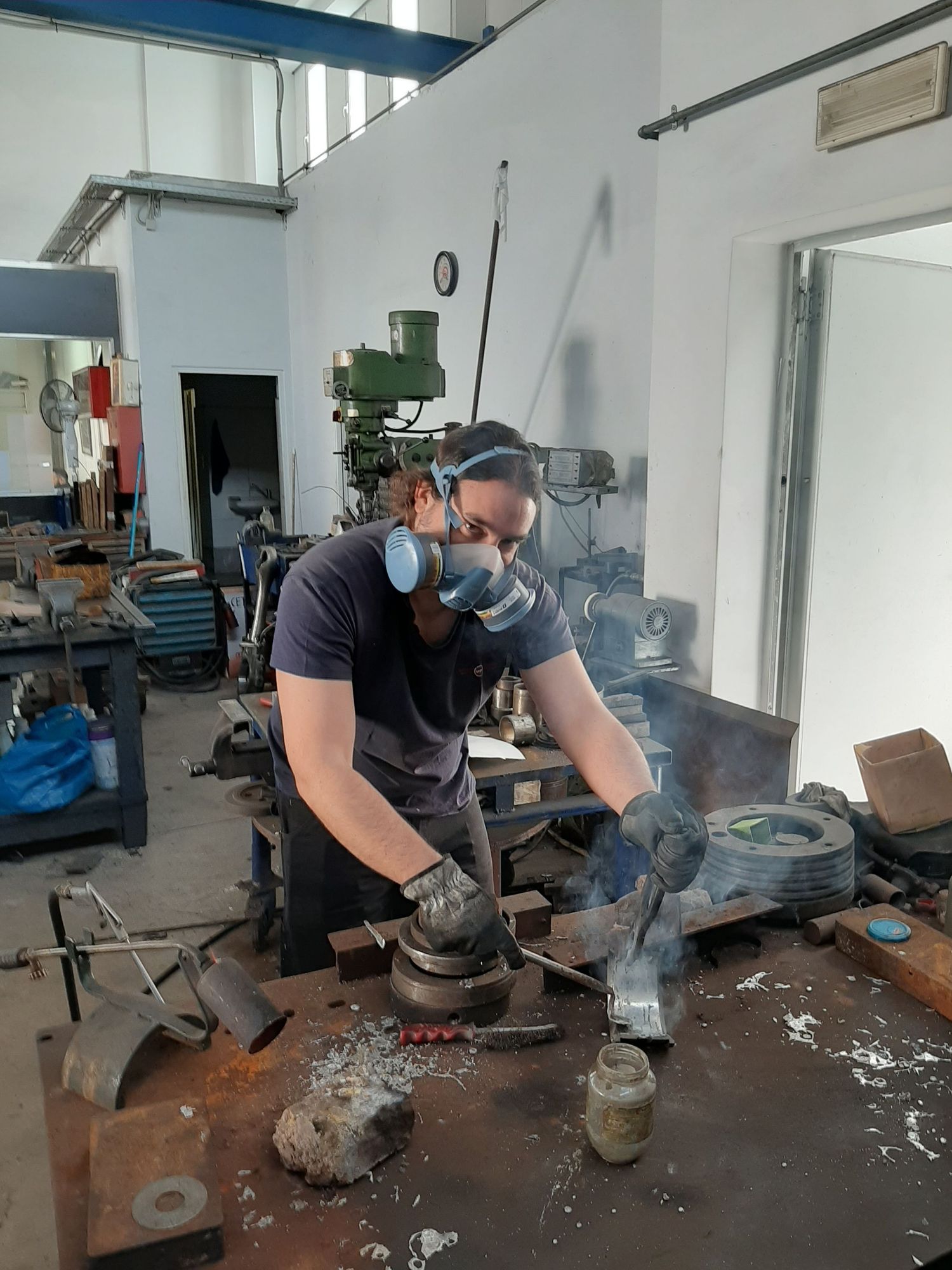Bearings Manufacturing & Remetalling
All these years OTEM has successfully completed many projects in its workshop department, that deal with boring, honing, milling, and bearings manufacturing and remetalling.
Boring machine
Device for producing smooth and accurate holes in a workpiece by enlarging existing holes with a bore, which may bear a single cutting tip of steel, cemented carbide, or diamond or may be a small grinding wheel. Single-point tools, gripped in a boring head attached to a rotating spindle, are moved circularly against the sides of the existing holes. The diameter of the hole swept out by the tool is controlled by adjustment of the boring head.
Milling machine
Device that rotates a circular tool that has a number of cutting edges symmetrically arranged about its axis; the workpiece is commonly held in a vise or similar device clamped to a table that can move in three perpendicular directions. Disk- or barrel-shaped cutters are clamped through holes in their centres to arbors (shafts) attached to the machine spindle; they have teeth on their peripheries only or on both peripheries and faces. An end mill is a cutter shaped like a pencil with a tapered shank that fits into the machine spindle; it has cutting teeth on its face and spiral blades on the lateral surface.
In the milling operation the workpiece is carried on a table that is driven either manually or by power against the rotating cutter. Milling machines usually produce flat surfaces, but any shape that can be ground on the cutter will be reproduced on the work. To mill the teeth of a spur gear, a disk-type cutter with its cutting edges in the shape of the space (groove) between the teeth of the gear is used, milling the gear blank one space at a time.
Bearings Manufacturing & Remetalling
Bearings Manufacturing & Remetalling
Babbitt metal, also spelled Babbit Metal, any of several tin- or lead-based alloys used as bearing material for axles and crankshafts, based on the tin alloy invented in 1839 by Isaac Babbitt for use in steam engines. Modern babbitts provide a low-friction lining for bearing shells made of stronger metals such as cast iron, steel, or bronze. They may be made of: (1) high-tin alloys with small quantities of antimony and copper; (2) high-lead alloys containing antimony, arsenic, and tin; and (3) intermediate tin-lead alloys with antimony and copper. The small quantities of hard metal in a soft matrix of tin or lead create a material strong enough to bear relatively high speeds and loads yet soft enough to embed dirt or other intrusions and not seize up on a spinning shaft in case of lubrication failure. Tin babbitts can be used at higher temperatures than the cheaper lead alloys.



